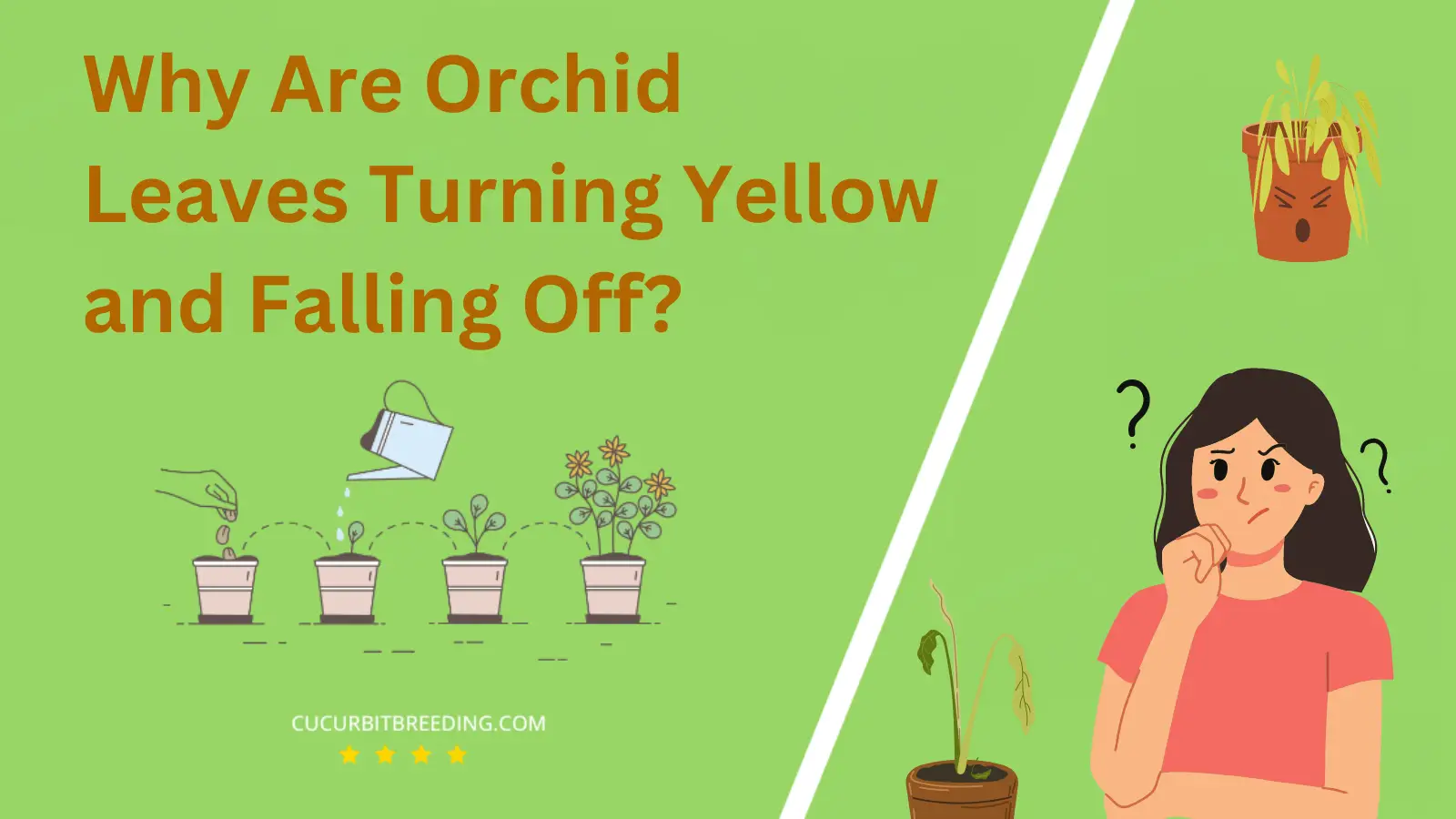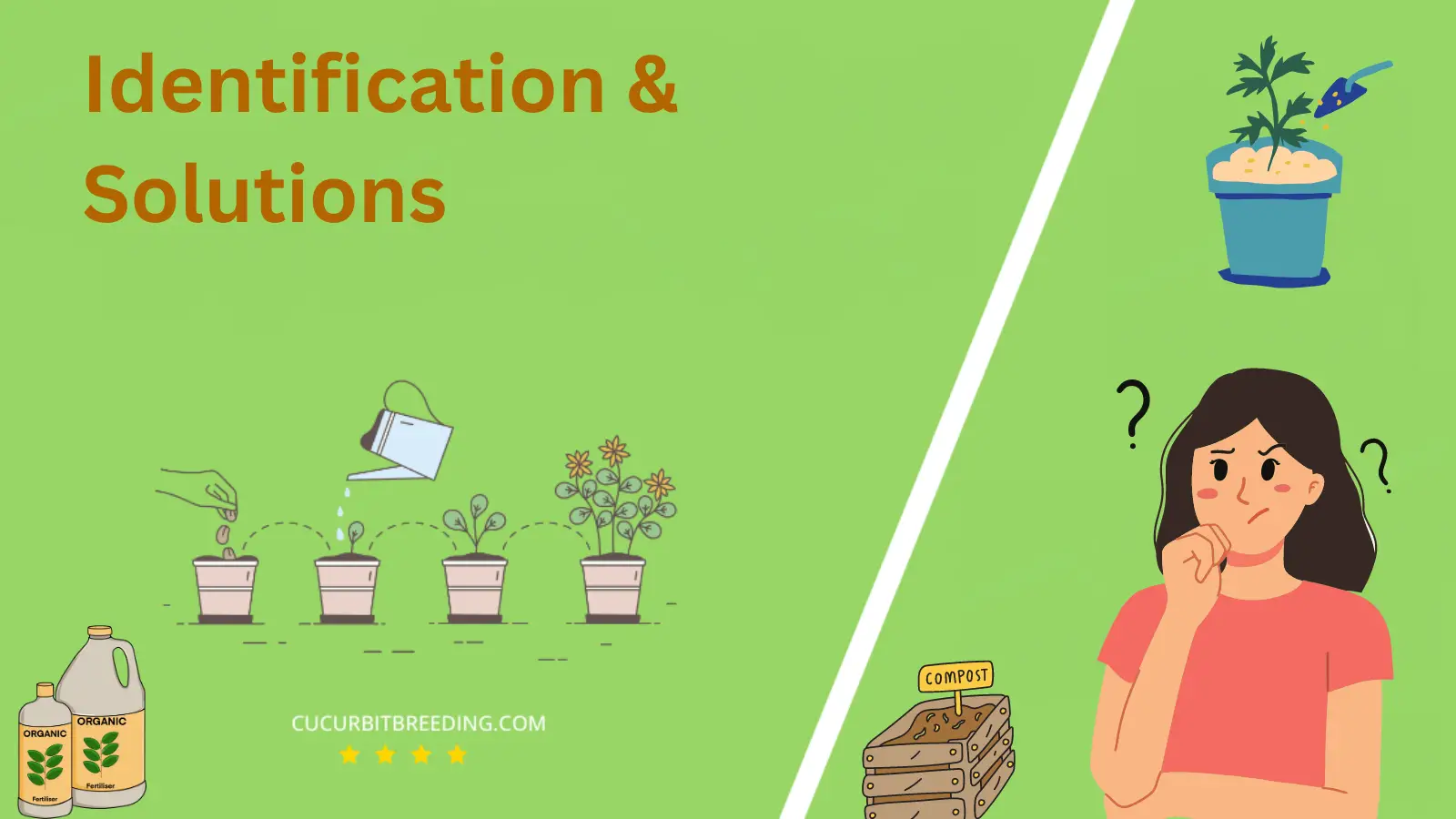
There’s nothing more distressing for an orchid lover than seeing their beloved plant’s leaves turning yellow and falling off. This symptom is usually an indication that something’s amiss in your garden’s care, but what exactly could it be? Is it due to overwatering, disease, or perhaps natural aging?
Understanding orchid health can be a fascinating but intricate web of knowledge, combining botany and caretaking skills. But don’t worry! We’re going to unravel this mystery together.
Why Are Orchid Leaves Turning Yellow and Falling Off?
1. Lack of sunlight
| Description | The lack of sunlight causes a decrease in chlorophyll production, leading to yellowing and leaf loss. |
|---|---|
| Solution | Increase exposure to sunlight to prevent yellowing and falling off of orchid leaves. |
Sunlight Deficiency causes yellowing of orchid leaves due to an insufficient photosynthesis process. The reduction of sunlight makes it difficult for the plant to produce enough chlorophyll, which leaves the plant with unhealthy, yellow leaves. Additionally, a prolonged state of inadequate sunlight can lead the leaves to fall off.
To combat this issue, relocate your orchid to a brighter spot, preferably where it gets indirect sunlight as direct sunlight may burn the leaves. However, be cautious while moving since sudden changes in environment could add more stress to the plant. If an outdoor spot with sufficient light is unavailable, consider investing in artificial plant lights to provide the necessary light exposure for your orchid. It’s important to note that different types of orchid may require a different amount of sunlight exposure, so it’s crucial to understand your orchid’s specific needs.
2. Overwatering
| Description | Overwatering causes root suffocation, leading to nutrient deficiencies, chlorophyll breakdown, and yellowing leaf discoloration. |
|---|---|
| Solution | Reduce watering frequency to prevent root rot and promote healthy leaf growth. |
Overwatering effects on Orchid:
Overwatering is one of the common problems that result in yellowing orchid leaves and eventually their fall. This is because excessive watering leads to waterlogged roots which deprive them of oxygen, causing root rot. Inside a rotting root, plant cell walls break down, which effectively blocks the water path to the leaves. This leads to the orchid leaves appearing yellow as they are not getting enough water due to the rotting roots.
Solutions to Overwatering:
To rectify this, the orchid should be allowed to dry out before being watered again. A balanced watering schedule is essential for optimal orchid health. Additionally, repotting the orchid in fresh media can help if root rot has set in. It’s also recommended to use a pot with good drainage to prevent waterlogging. When watering orchids, aim for moist, not soggy, media. Regularly inspect your orchid’s root health to adjust the watering schedule accordingly.
3. Nutrient deficiency
| Description | Orchid leaves turn yellow and fall off due to nutrient deficiency, affecting their physiological processes. |
|---|---|
| Solution | Provide adequate nutrients through proper fertilization to prevent yellowing and falling of orchid leaves. |
An improper balance of nutrients can cause the leaves of orchids to turn yellow and fall off. Nutrient deficiency can inhibit the plant’s ability to conduct photosynthesis, thus restricting its ability to produce food.
Iron deficiency is often a cause of yellowing leaves. Iron is a critical nutrient for photosynthesis. When lacking, the leaves can’t produce enough chlorophyll, leading to yellowing. Another vital element is Nitrogen, a primary component of plant proteins and chlorophyll. A lack of Nitrogen can also lead to yellow leaves.
To overcome these nutrient deficiencies, identify the specific nutrient lacking and supplement it. Use a balanced, water-soluble orchid fertilizer that contains essential nutrients including Nitrogen, Phosphorus, and Potassium, along with other essential micronutrients like Iron. Spraying these nutrients on the orchid leaves also helps.
Regular checks for signs of nutrient deficiency and taking immediate steps can prevent severe yellowing and falling off of leaves. As every orchid species may need different care and nutrient requirements, tailoring the solution based on your specific orchid is also crucial. Regular monitoring of the plant’s health and timely intervention can save your orchid from nutrient-deficiency related problems. It should be remembered that over-fertilizing can burn the roots and cause damage, so balance is key.
4. Pest infestation
| Description | Orchid leaves turn yellow and fall off due to nutrient deficiency, affecting their physiological processes. |
|---|---|
| Solution | Provide adequate nutrients through proper fertilization to prevent yellowing and falling of orchid leaves. |
When an orchid is infested with pests, this can lead to its leaves turning yellow and falling off. Pests such as scale, mealybugs, mites, and slugs suck the sap out of the orchid’s leaves, causing overall plant health to diminish, leading to yellowing and leaf drop as a response to the stress inflicted by these bugs. This condition weakens the plant, interfering with its growth and nutrient absorption.
To address this problem, first manually remove as many pests as you can from the orchid. Use a soft cloth or a gentle stream of water for this purpose. Then, apply a pesticide specifically designed for orchids. Ensure that not only the orchid’s leaves but also its roots and potting medium are treated, as pests could be hiding there too. Regularly monitor your orchid, repeating the treatment if necessary. Along with this, maintain optimal growing conditions for your orchid—appropriate light, temperature, and humidity—to help it recover.

5. Fungal or bacterial infection
| Description | Provide adequate nutrients through proper fertilization to prevent yellowing and falling of orchid leaves. |
|---|---|
| Solution | Apply appropriate fungicide or bactericide to prevent and treat infection, ensuring proper watering and sunlight. |
Orchid leaves may turn yellow and fall off because of fungal or bacterial infections. These infections can cause rot diseases, hence leading to yellowing and dropping off of leaves. The various symptoms might include the appearance of soft, watery spots on the leaves which eventually turn yellow and brown. If left untreated, these diseases can significantly weaken the plant causing leaf drop, and in some cases, the death of the plant.
The best way of controlling such infections includes improving the hygiene conditions around your orchids. Regularly sterilize your tools, repotting media, and the pots themselves. Moreover, avoid overwatering your orchids as this can create a conducive environment for the development and spread of these pathogens. In case of a severe infection, you might want to apply suitable fungicides or bactericides. Always remember to follow the product guidelines to avoid damaging your orchids. Lastly, maintain proper air circulation around each plant to minimize the chances of pathogen spread.
6. Temperature stress
| Description | The yellowing and falling off of orchid leaves is caused by temperature stress. |
|---|---|
| Solution | Provide consistent temperature and avoid extreme fluctuations to prevent orchid leaves from turning yellow and falling off. |
Orchid leaves turning yellow and falling off can be a sign of temperature stress. Orchids are tropical plants and require a specific temperature range to thrive, usually between 60 to 80 degrees Fahrenheit. A consistent temperature outside this range can stress the plant, leading to yellowing leaves and eventual leaf drop. This process occurs as the plant tries to conserve resources and protect itself from the unfavorable conditions.
If your orchid is showing signs of temperature-related stress, consider moving it to a more suitable location with temperatures within its preferred range. Remember to avoid rapid temperature changes that might shock the plant. Additionally, be mindful of the orchid’s exposure to direct sunlight, which can raise the temperature and burn the leaves, causing them to turn yellow and fall off. To prevent burns, place the orchid in a brightly lit location, but out of direct sun.
Proper watering is also key to addressing temperature stress. Water the orchid regularly, but avoid overwatering as it can lead to root rot, which also causes yellowing leaves. Ensure the orchid potting medium is well-draining to avoid waterlogged conditions. Regularly monitor the plant and its growing conditions to mitigate temperature stress and keep your orchid healthy and vibrant.
7. Aging or natural leaf shedding
| Description | The specific reason for a leaf turning yellow is aging or natural leaf shedding. |
|---|---|
| Solution | Increase nutrient intake to support new leaf growth and promote overall plant health. |
Orchid leaves may turn yellow and fall off for a variety of reasons but one common cause is overwatering. When an orchid is overwatered, the roots become waterlogged and oxygen-starved. This leads to root rot, which decreases the plant’s ability to take up water and nutrients, causing the leaves to become discolored and fall off.
To rectify overwatering, firstly, remove the orchid from its pot and trim away any rotten roots. Then, repot the orchid in fresh orchid mix and ensure the pot has excellent drainage. Going forward, remember that most orchids thrive on neglect, so let the orchid mix dry out completely before watering again.
Additionally, consider changing your watering schedule based on the orchid’s needs. Most orchids will need watering once a week in warmer months and once every two weeks in cooler months. However, always check the moisture level of the orchid mix before watering. With proper care and watering technique, your orchid can regain its health and continue to thrive.